 A major concern for the future of the Florida avocado industry is laurel wilt disease (LW), which is caused by fungus transmitted by the ambrosia beetle. Cost-effective management of LW relies heavily on the early detection and destruction of affected trees (sanitation). While not an official recommendation, some suggest that since the beetles are less attracted to younger trees, growers might consider leaving the young orchards in production while replanting only older and less productive orchards. Since the long-term survival of the Florida avocado industry may ultimately depend on a combination of eradication, prophylactic treatment, and replanting the trees, the purpose of this article is to provide an updated guidance on the costs of establishing an avocado orchard. Information presented in this study is based on interviews with growers, orchard service companies, extension agents, and other industry personnel. It is intended as a guide only to make production decisions, prepare budgets, and investigate insurance options. A follow-up document to this one will focus on the cost and return of maintaining an orchard after it has been established. This 9-page fact sheet was written by Braulia De Oleo, Edward A. Evans, and Jonathan H. Crane, and published by the UF Department of Food and Resource Economics, October 2014.
A major concern for the future of the Florida avocado industry is laurel wilt disease (LW), which is caused by fungus transmitted by the ambrosia beetle. Cost-effective management of LW relies heavily on the early detection and destruction of affected trees (sanitation). While not an official recommendation, some suggest that since the beetles are less attracted to younger trees, growers might consider leaving the young orchards in production while replanting only older and less productive orchards. Since the long-term survival of the Florida avocado industry may ultimately depend on a combination of eradication, prophylactic treatment, and replanting the trees, the purpose of this article is to provide an updated guidance on the costs of establishing an avocado orchard. Information presented in this study is based on interviews with growers, orchard service companies, extension agents, and other industry personnel. It is intended as a guide only to make production decisions, prepare budgets, and investigate insurance options. A follow-up document to this one will focus on the cost and return of maintaining an orchard after it has been established. This 9-page fact sheet was written by Braulia De Oleo, Edward A. Evans, and Jonathan H. Crane, and published by the UF Department of Food and Resource Economics, October 2014.
http://edis.ifas.ufl.edu/fe956
Tag: Edward A. Evans
An Overview of US Blueberry Production, Trade, and Consumption, with Special Reference to Florida
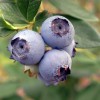 This 8-page fact sheet provides updated information about the recent trends in blueberry production, consumption, and trade for the US market. Current and future short-term trends are discussed. Price analysis at the wholesale level for selected markets on the US East Coast (New York City) and US West Coast (Los Angeles) are presented. Also, the national average retail prices for conventional and organic blueberries are presented. Written by Edward A. Evans and Fredy H. Ballen, and published by the UF Department of Food and Resource Economics, October 2014.
This 8-page fact sheet provides updated information about the recent trends in blueberry production, consumption, and trade for the US market. Current and future short-term trends are discussed. Price analysis at the wholesale level for selected markets on the US East Coast (New York City) and US West Coast (Los Angeles) are presented. Also, the national average retail prices for conventional and organic blueberries are presented. Written by Edward A. Evans and Fredy H. Ballen, and published by the UF Department of Food and Resource Economics, October 2014.
http://edis.ifas.ufl.edu/fe952
Consuming local vegetables from our local growers
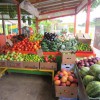 In recent years, consumers increasingly are seeking out locally grown foods, due to concern for freshness, food safety, and the carbon footprint associated with food sourced from distant places. This 5-page fact sheet promotes local vegetable consumption by pointing out some of the advantages, benefits, and business opportunities associated with local vegetable production and consumption. Written by Qingren Wang, Edward A. Evans, Margie Pikarsky, and Teresa Olczyk, and published by the UF Department of Horticultural Sciences, September 2014.
In recent years, consumers increasingly are seeking out locally grown foods, due to concern for freshness, food safety, and the carbon footprint associated with food sourced from distant places. This 5-page fact sheet promotes local vegetable consumption by pointing out some of the advantages, benefits, and business opportunities associated with local vegetable production and consumption. Written by Qingren Wang, Edward A. Evans, Margie Pikarsky, and Teresa Olczyk, and published by the UF Department of Horticultural Sciences, September 2014.
http://edis.ifas.ufl.edu/hs1251
Are Profit and Profitability the Same Thing?
 The terms “profit” and “profitability” are used quite frequently in everyday talk to mean the same thing. We often hear someone say “my business made a profit last year” or “my business was profitable.” But are the two statements equivalent? In this article, I’ll explain the two terms, outlining the difference between them, and discussing a few things that growers can do to improve the profitability of a farm business. This 4-page fact sheet was written by Edward Evans, and published by the UF Department of Food and Resource Economics, February 2014.
The terms “profit” and “profitability” are used quite frequently in everyday talk to mean the same thing. We often hear someone say “my business made a profit last year” or “my business was profitable.” But are the two statements equivalent? In this article, I’ll explain the two terms, outlining the difference between them, and discussing a few things that growers can do to improve the profitability of a farm business. This 4-page fact sheet was written by Edward Evans, and published by the UF Department of Food and Resource Economics, February 2014.
http://edis.ifas.ufl.edu/fe939
A Synopsis of US Consumer Perception of Genetically Modified (Biotech) Crops
 Over the last few decades, the use of modern tools of molecular biology has made it possible to discover, isolate, and introduce several important agricultural traits in cultivated crops. Such improvements are usually accomplished by the technique known as genetic engineering, also known as genetic modification. The aim of this article is to provide an update on recent developments with respect to GM food crops, as well as an assessment of US public opinion with regards to GM foods in general. A successful case of how a US-grown GM crop gained acceptance in one of the strictest fruit importing countries is presented. This 8-page fact sheet was written by Edward A. Evans and Fredy H. Ballen, and published by the UF Department of Food and Resource Economics, June 2013.
Over the last few decades, the use of modern tools of molecular biology has made it possible to discover, isolate, and introduce several important agricultural traits in cultivated crops. Such improvements are usually accomplished by the technique known as genetic engineering, also known as genetic modification. The aim of this article is to provide an update on recent developments with respect to GM food crops, as well as an assessment of US public opinion with regards to GM foods in general. A successful case of how a US-grown GM crop gained acceptance in one of the strictest fruit importing countries is presented. This 8-page fact sheet was written by Edward A. Evans and Fredy H. Ballen, and published by the UF Department of Food and Resource Economics, June 2013.
http://edis.ifas.ufl.edu/fe934
US-Panama Free Trade Agreement: What Is in It for Florida Agriculture?
 On October 12, 2011, four years after it was agreed upon by both parties, the United States government signed into law the reciprocal US–Panama Free Trade Agreement (FTA)/Trade Promotion Agreement (TPA). The FTA provides US companies with better access to the Panamanian market and ensures that most US exports of consumer and industrial products to Panama will be accorded immediate duty-free privileges. The main elements of the US–Panama FTA as it relates to agricultural trade revolve around market access, agricultural export subsidies, safeguards, the sugar compensation mechanism, and sanitary and phytosanitary measures. This 11-page fact sheet was written by Edward A. Evans and Fredy H. Ballen, and published by the UF Department of Food and Resource Economics, May 2013.
On October 12, 2011, four years after it was agreed upon by both parties, the United States government signed into law the reciprocal US–Panama Free Trade Agreement (FTA)/Trade Promotion Agreement (TPA). The FTA provides US companies with better access to the Panamanian market and ensures that most US exports of consumer and industrial products to Panama will be accorded immediate duty-free privileges. The main elements of the US–Panama FTA as it relates to agricultural trade revolve around market access, agricultural export subsidies, safeguards, the sugar compensation mechanism, and sanitary and phytosanitary measures. This 11-page fact sheet was written by Edward A. Evans and Fredy H. Ballen, and published by the UF Department of Food and Resource Economics, May 2013.
http://edis.ifas.ufl.edu/fe932
Costos Estimados en el 2010 para Establecer y Producir Pitaya (Fruta Dragón) en el Sur de Florida (FE921)
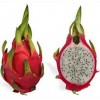 Como consecuencia de la creciente competencia extranjera y la disminución de rendimientos de los productos agrícolas tradicionales, muchos productores en el Sur de la Florida se han embarcado en una búsqueda agresiva de productos agrícolas que sean alternativas viables. Un producto que ha llamado la atención es la pitaya, una especie de cactus trepador autóctona de las regiones de bosques tropicales de México, Centroamérica y América del Sur. De menos de 50 hectáreas plantadas en la Florida en fecha tan reciente como 2006, la producción se ha multiplicado por seis y ahora se estima en alrededor de 320 acres. This 6-page fact sheet was written by Edward A. Evans, Jordan Huntley, Jonathan Crane, and Allen F. Wysocki, and published by the UF Department of Food and Resource Economics, March 2013.
Como consecuencia de la creciente competencia extranjera y la disminución de rendimientos de los productos agrícolas tradicionales, muchos productores en el Sur de la Florida se han embarcado en una búsqueda agresiva de productos agrícolas que sean alternativas viables. Un producto que ha llamado la atención es la pitaya, una especie de cactus trepador autóctona de las regiones de bosques tropicales de México, Centroamérica y América del Sur. De menos de 50 hectáreas plantadas en la Florida en fecha tan reciente como 2006, la producción se ha multiplicado por seis y ahora se estima en alrededor de 320 acres. This 6-page fact sheet was written by Edward A. Evans, Jordan Huntley, Jonathan Crane, and Allen F. Wysocki, and published by the UF Department of Food and Resource Economics, March 2013.
http://edis.ifas.ufl.edu/fe921
Estimacion de costos de establecimiento y produccion de papaya en el sur de la Florida en 2012 (FE920)
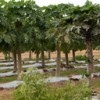 El alza reciente en los precios de la papaya, consecuencia de las restricciones fitosanitarias impuestas a la fruta proveniente de México, ha despertado el interés de productores en el Sur de la Florida, quienes han percibido la oportunidad de suplir la demanda por papaya madura en los Estados Unidos. No obstante, hay mucha incertidumbre con respecto a la viabilidad económica del negocio. El objetivo de este documento es proveer información acerca del retorno económico y los costos de producción de un cultivo de 5 acres de papaya en el Sur de la Florida. Igualmente, se evaluaron precios y rendimientos que permitirían que el negocio fuese rentable en el Sur de Florida. This 7-page fact sheet was written by Edward A. Evans, Fredy H. Ballen, y Jonathan H. Crane, and published by the UF Department of Food and Resource Economics, February 2013.
El alza reciente en los precios de la papaya, consecuencia de las restricciones fitosanitarias impuestas a la fruta proveniente de México, ha despertado el interés de productores en el Sur de la Florida, quienes han percibido la oportunidad de suplir la demanda por papaya madura en los Estados Unidos. No obstante, hay mucha incertidumbre con respecto a la viabilidad económica del negocio. El objetivo de este documento es proveer información acerca del retorno económico y los costos de producción de un cultivo de 5 acres de papaya en el Sur de la Florida. Igualmente, se evaluaron precios y rendimientos que permitirían que el negocio fuese rentable en el Sur de Florida. This 7-page fact sheet was written by Edward A. Evans, Fredy H. Ballen, y Jonathan H. Crane, and published by the UF Department of Food and Resource Economics, February 2013.
http://edis.ifas.ufl.edu/fe920
2012 Cost Estimates of Establishing and Producing Papaya (Carica papaya) in South Florida (FE918)
 With the recent spike in papaya prices due to phytosanitary restrictions on papayas from Mexico, many growers in South Florida are considering getting back into papaya production to target the ripe papaya market. Still, there are a lot of concerns as to whether the crop can be profitable in light of declining yields. Based on this discussion, the objective of this article is to provide needed information on the costs and returns associated with establishing and operating a five-acre papaya orchard in South Florida, and to assess the prices and yields that must be obtained to make a papaya orchard profitable. This 5-page fact sheet was written by Edward A. Evans, Fredy H. Ballen, and Jonathan H. Crane, and published by the UF Department of Food and Resource Economics, December 2012.
With the recent spike in papaya prices due to phytosanitary restrictions on papayas from Mexico, many growers in South Florida are considering getting back into papaya production to target the ripe papaya market. Still, there are a lot of concerns as to whether the crop can be profitable in light of declining yields. Based on this discussion, the objective of this article is to provide needed information on the costs and returns associated with establishing and operating a five-acre papaya orchard in South Florida, and to assess the prices and yields that must be obtained to make a papaya orchard profitable. This 5-page fact sheet was written by Edward A. Evans, Fredy H. Ballen, and Jonathan H. Crane, and published by the UF Department of Food and Resource Economics, December 2012.
http://edis.ifas.ufl.edu/fe918
Una mirada a la produccion, el comercio y el consumo de papaya a nivel mundial (FE917)
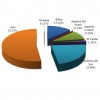 Este artículo provee información referente a las tendencias globales en cuanto a producción, comercio mundial y los países exportadores e importadores de papaya. Written by Edward A. Evans and Fredy H. Ballen, and published by the UF Department of Food and Resource Economics, October 2012.
Este artículo provee información referente a las tendencias globales en cuanto a producción, comercio mundial y los países exportadores e importadores de papaya. Written by Edward A. Evans and Fredy H. Ballen, and published by the UF Department of Food and Resource Economics, October 2012.
http://edis.ifas.ufl.edu/fe917
An Overview of US Papaya Production, Trade, and Consumption (FE914)
![fe914 Figure 1. US fresh papaya imports by origin, 2002–2011 (metric tonnes [t]). Source: USDA/FAS (2012).](http://edis-news.ifas.ufl.edu/wp-content/uploads/2012/09/fe914-100x100.jpg) The United States produces close to 14,000 t of papaya annually. Consumption of the fruit is on the upswing and the development of new cultivars tolerant to the Papaya Ring Spot Virus encourage many growers in South Florida to taking a second look at producing papaya for the domestic market. This 8-page fact sheet provides information on domestic trends in the production and trade of fresh papaya in the U.S. Also included is a price analysis at the wholesale level for representative markets on the US East and West Coasts. Written by Edward A. Evans, Fredy H. Ballen, and Jonathan H. Crane, and published by the UF Department of Food and Resource Economics, September 2012.
The United States produces close to 14,000 t of papaya annually. Consumption of the fruit is on the upswing and the development of new cultivars tolerant to the Papaya Ring Spot Virus encourage many growers in South Florida to taking a second look at producing papaya for the domestic market. This 8-page fact sheet provides information on domestic trends in the production and trade of fresh papaya in the U.S. Also included is a price analysis at the wholesale level for representative markets on the US East and West Coasts. Written by Edward A. Evans, Fredy H. Ballen, and Jonathan H. Crane, and published by the UF Department of Food and Resource Economics, September 2012.
http://edis.ifas.ufl.edu/fe914
An Overview of Global Papaya Production, Trade, and Consumption (FE913)
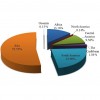 The market demand for tropical fruits has been growing steadily over the past two decades. Global papaya production has grown significantly over the last few years, mainly as a result of increased production in India. Papaya has become an important agricultural export for developing countries, where export revenues of the fruit provide a livelihood for thousands of people, especially in Asia and Latin America. Papaya exports contribute to the growing supply of healthy food products on international markets. The top three exporting countries accounted for 63.28 percent of the total global exports of papaya between 2007 and 2009, with more than half of those exports going to the United States. This 7-page fact sheet provides information on global trends in the production and trade of papaya. An overview of the current and future trends of global papaya production and trade, and the main papaya exporting and importing countries is presented herewith. Written by Edward A. Evans and Fredy H. Ballen, and published by the UF Department of Food and Resource Economics, September 2012.
The market demand for tropical fruits has been growing steadily over the past two decades. Global papaya production has grown significantly over the last few years, mainly as a result of increased production in India. Papaya has become an important agricultural export for developing countries, where export revenues of the fruit provide a livelihood for thousands of people, especially in Asia and Latin America. Papaya exports contribute to the growing supply of healthy food products on international markets. The top three exporting countries accounted for 63.28 percent of the total global exports of papaya between 2007 and 2009, with more than half of those exports going to the United States. This 7-page fact sheet provides information on global trends in the production and trade of papaya. An overview of the current and future trends of global papaya production and trade, and the main papaya exporting and importing countries is presented herewith. Written by Edward A. Evans and Fredy H. Ballen, and published by the UF Department of Food and Resource Economics, September 2012.
http://edis.ifas.ufl.edu/fe913
US/Colombia Free Trade Agreement: What Is in It for Florida Agriculture? (FE905)
 On October 12, 2011, the US Congress ratified a Free Trade Agreement/Trade Promotion Agreement (FTA) with Colombia, five years after it was signed by President George W. Bush. The FTA took effect in May of 2012. This 13-page fact sheet highlights the key elements of the US Colombia FTA as they relate to trade in agricultural commodities, and to examine what is at stake for Florida. Written by Edward A. Evans and Fredy H. Ballen, and published by the UF Department of Food and Resource Economics, July 2012.
On October 12, 2011, the US Congress ratified a Free Trade Agreement/Trade Promotion Agreement (FTA) with Colombia, five years after it was signed by President George W. Bush. The FTA took effect in May of 2012. This 13-page fact sheet highlights the key elements of the US Colombia FTA as they relate to trade in agricultural commodities, and to examine what is at stake for Florida. Written by Edward A. Evans and Fredy H. Ballen, and published by the UF Department of Food and Resource Economics, July 2012.
http://edis.ifas.ufl.edu/fe905
Overview of US Agricultural Trade with China (FE902/FE902)
One bright spot in the US–China trade deficit is the trade of agricultural products, which continues to reflect a trade surplus that has grown considerably within the last decade. This 11-page fact sheet provides an overview of US–China trade of agricultural products, with special focus on produce, specifically over the period 2000 to 2010, and to highlight the main factors driving the widening of the agricultural trade surplus. The implications of modernizing the Chinese agricultural sector for the US fruit and vegetable industry are also discussed. Written by Xiuzhi Wang, Edward A. Evans, and Fredy H. Ballen, and published by the UF Department of Food and Resource Economics, February 2012.
http://edis.ifas.ufl.edu/fe902
Banana Market (FE901)
The United States is the largest single-country importer of fresh bananas. With a per capita consumption of about 25 pounds, the banana market appears to be saturated, but consumption of organic bananas in the United States is increasing. Any expansion of the banana production in the United States should focus on the niche market for organic bananas and specialty varieties as Florida growers do. This 10-page fact sheet provides an overview of the world and US markets for fresh bananas, with special reference to the US market for organic bananas. Written by Edward Evans and Fredy Ballen, and published by the UF Department of Food and Resource Economics, February 2012.
http://edis.ifas.ufl.edu/fe901
Ley del Estado de la Florida para el avalúo tributario de tierras según su uso: Preguntas y respuestas sobre la Clasificación Agropecuaria en el Condado de Miami-Dade (FE895)
 Use-value assessment is the most widely used technique in the United States today for maintaining land in agricultural production. Although general guidelines are provided to Florida counties on the application of the state’s use-value assessment law, counties may vary slightly in the application and determination of the agricultural land’s value. Therefore, it is important for agricultural landowners to understand the guidelines used to determine value in the county where the land is assessed and taxed. This 6-page factsheet applies specifically to Miami-Dade County, Florida. Written by Edward A. Evans, Mauricio Mosquera, Rodney L. Clouser y Jonathan Crane, and published by the UF Department of Food and Resource Economics, August 2011.
Use-value assessment is the most widely used technique in the United States today for maintaining land in agricultural production. Although general guidelines are provided to Florida counties on the application of the state’s use-value assessment law, counties may vary slightly in the application and determination of the agricultural land’s value. Therefore, it is important for agricultural landowners to understand the guidelines used to determine value in the county where the land is assessed and taxed. This 6-page factsheet applies specifically to Miami-Dade County, Florida. Written by Edward A. Evans, Mauricio Mosquera, Rodney L. Clouser y Jonathan Crane, and published by the UF Department of Food and Resource Economics, August 2011.
http://edis.ifas.ufl.edu/fe895
Florida’s Use-Value Assessment Law: Questions and Answers for Miami-Dade County Agricultural Classification (FE890)
Use-value assessment is the most widely used technique in the United States today for maintaining land in agricultural production. Although general guidelines are provided to Florida counties on the application of the state’s use-value assessment law, counties may vary slightly in the application and determination of the agricultural land’s value. Therefore, it is important for agricultural landowners to understand the guidelines used to determine value in the county where the land is assessed and taxed. This 5-page factsheet applies specifically to Miami-Dade County, Florida. Written by Edward A. Evans, Mauricio Mosquera, Rodney L. Clouser, and Jonathan Crane, and published by the UF Department of Food and Resource Economics, April 2011.
http://edis.ifas.ufl.edu/fe890
FE838 Costos estimados de reemplazo de árboles de aguacate en plantaciones comerciales y patios en el sur de Florida
FE838, a 4-page fact sheet by Edward A. Evans and Jonathan H. Crane, is the Spanish language version of FE825 Estimates of the Replacement Costs of Commercial and Backyard Avocado Trees in South Florida. It discusses the projected costs to replace commercial and residential avocado trees in South Florida, due to the potential problems caused by the redbay-laurel wilt disease. Includes references. Published by the UF Department of Food and Resource Economics, June 2010.
http://edis.ifas.ufl.edu/fe838
FE837 Sample Avocado Production Costs and Profitability Analysis for Florida
FE837, a 4-page illustrated fact sheet by Edward A. Evans and Sikavas Nalampang, provides an estimate of the costs and returns associated with avocado production in Miami-Dade County and a brief analysis of the profitability of the industry. Includes references. Published by the UF Department of Food and Resource Economics, June 2010.
http://edis.ifas.ufl.edu/fe837
FE825 Estimates of the Replacement Costs of Commercial and Backyard Avocado Trees in South Florida
FE825, a 4-page article by Edward A. Evans and Jonathan H. Crane, estimates how much it would cost to replace all commercial and residential backyard avocado trees in Miami-Dade, Broward, Palm Beach, and Lee Counties, in light of the recent discovery of the redbay-laurel wilt disease complex, which can destroy both commercial and backyard avocado trees. Includes references. Published by the UF Department of Food and Resource Economics, December 2009.
http://edis.ifas.ufl.edu/FE825